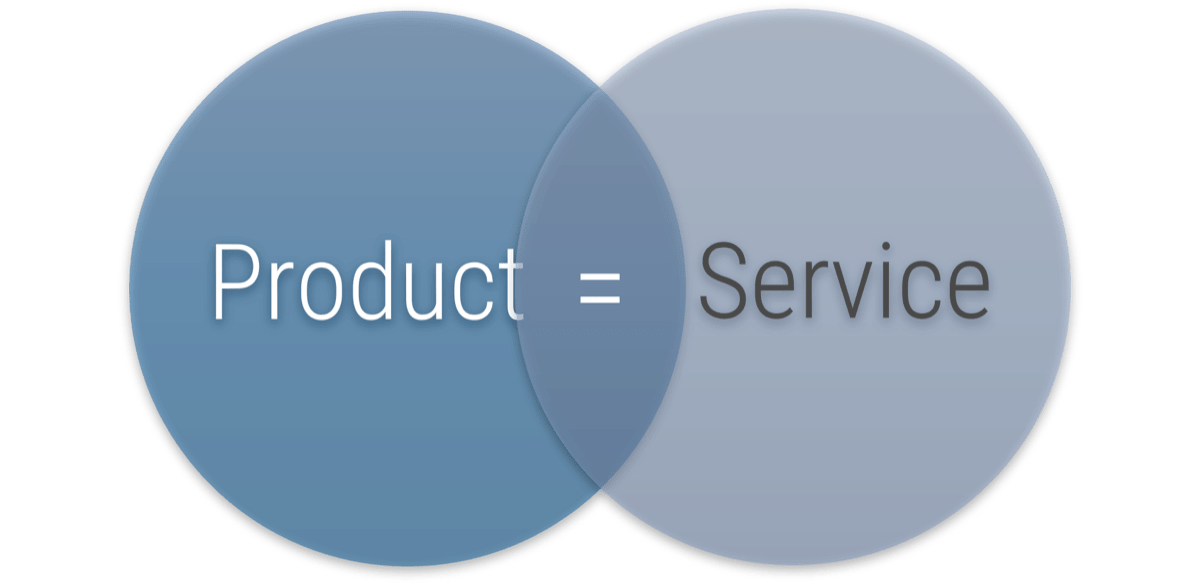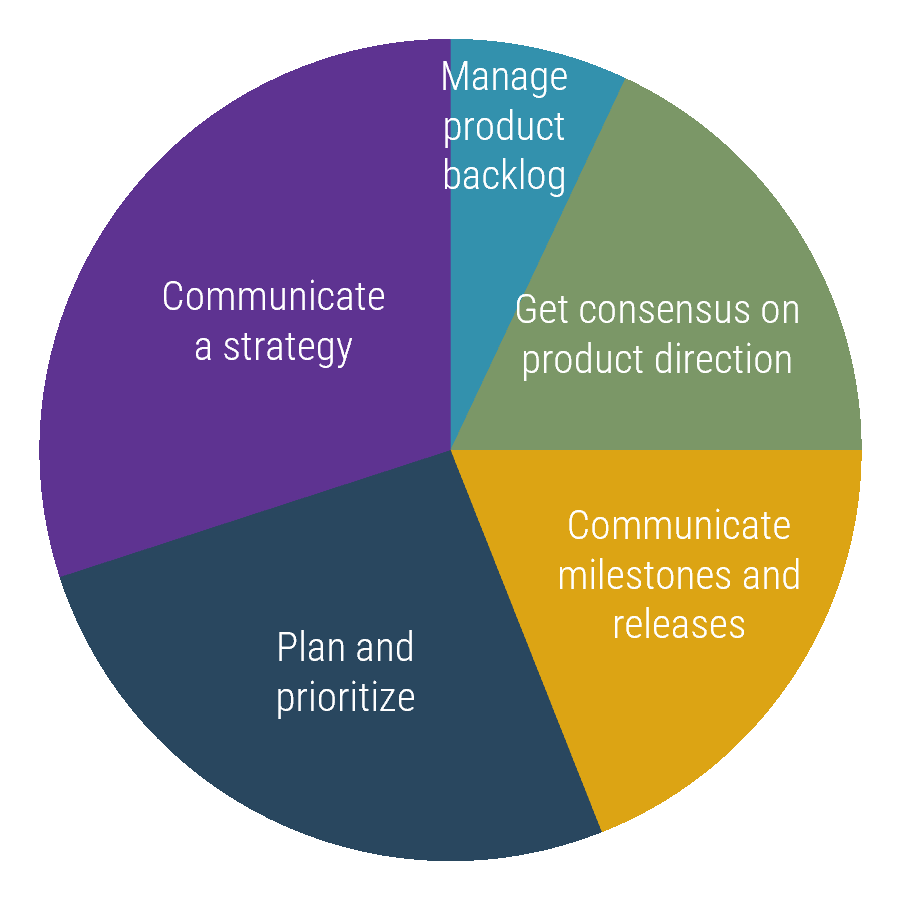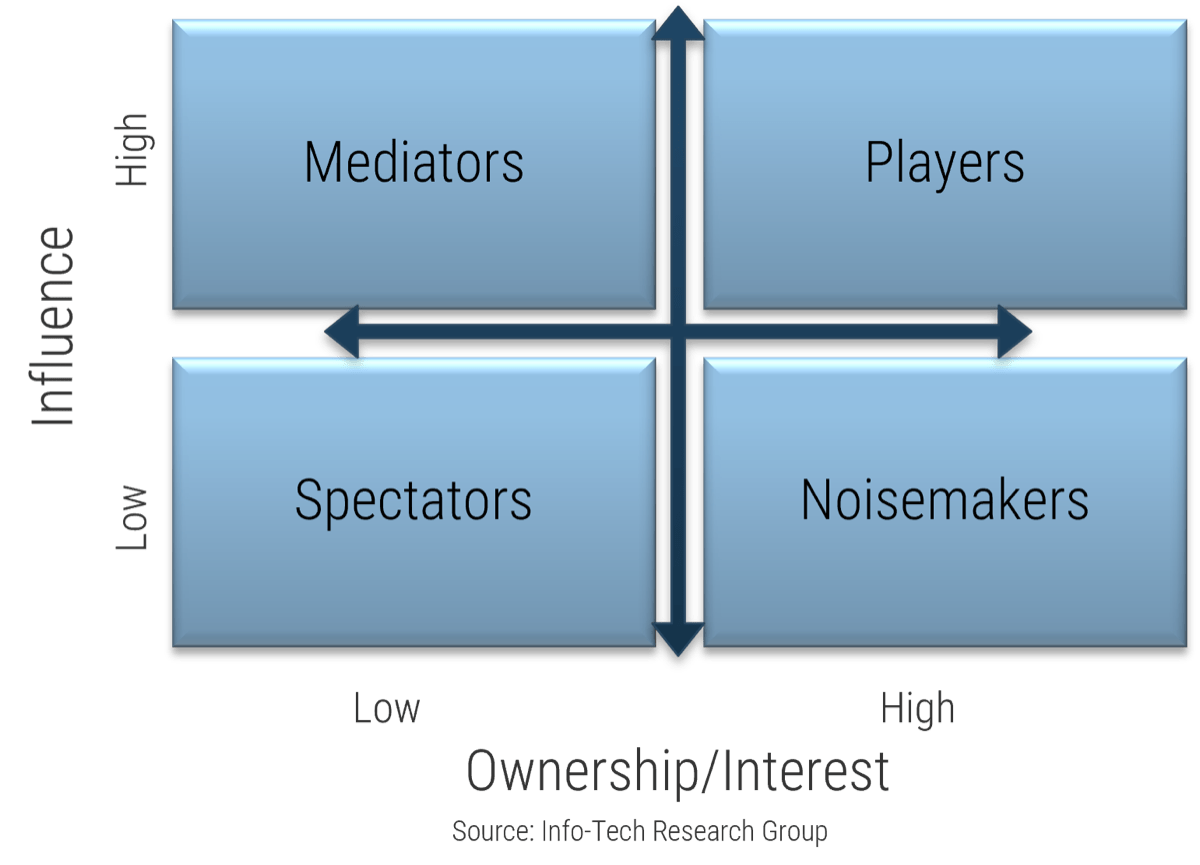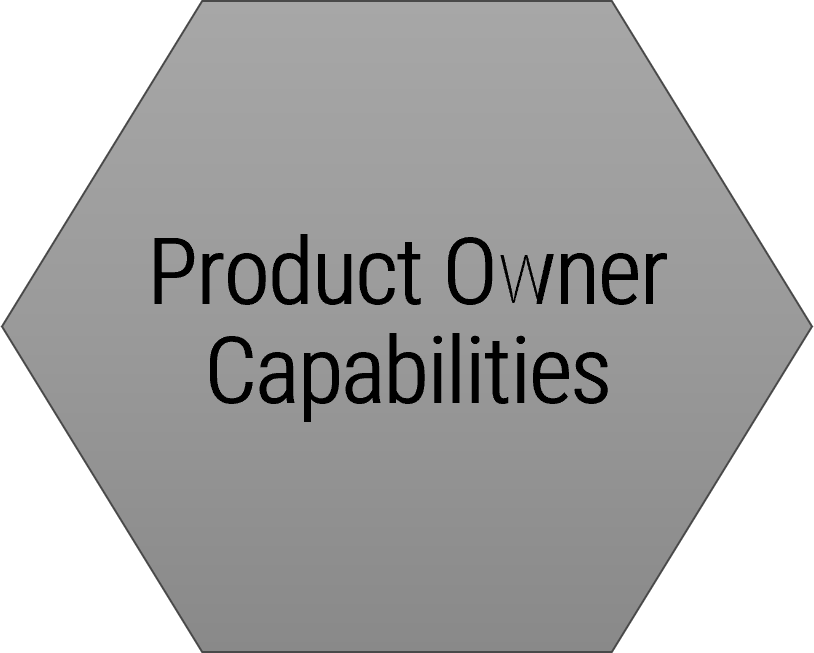Make the Case for Product Delivery
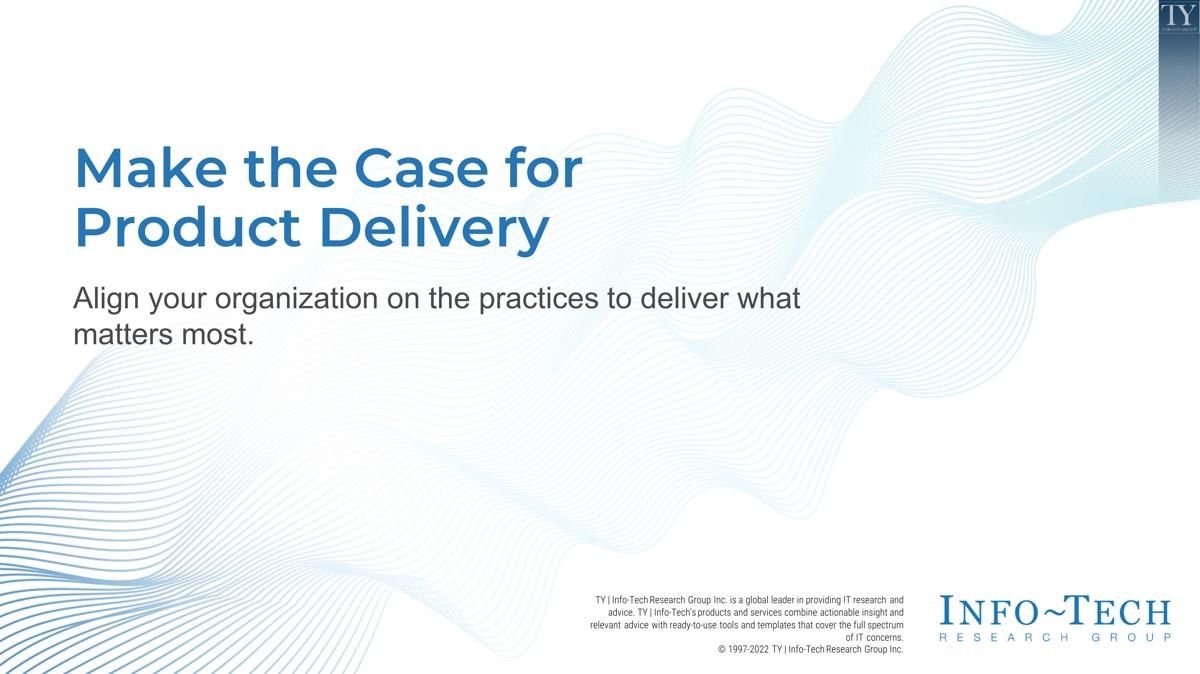
- Organizations are traditionally organized to deliver initiatives in specific periods of time. This is in contention with product-centric delivery practices. This form of delivery acknowledges the reality that solutions of all shapes and sizes deliver continual and evolving business value over their lifetime.
- Delivering multiple products together creates additional challenges because each product has its own pedigree, history, and goals.
- Product owners struggle to prioritize changes to deliver product value. This creates a gap and conflict between product and enterprise goals.
Our Advice
Critical Insight
- Delivering products doesn’t mean you will stop delivering projects! Product-centric delivery is intended to address the misalignment between the long-term delivery of value that organizations demand and the nature of traditional project-focused environments.
Impact and Result
- We will help you build a proposal deck to make the case to your stakeholders for product-centric delivery.
- You will build this proposal deck by answering key questions about product-centric delivery so you can identify:
- A common definition of product.
- How this form of delivery differs from traditional project-centric approaches.
- Key challenges and benefits.
- The capabilities needed to effectively own products and deliver value.
- What you are asking of stakeholders.
- A roadmap of how to get started.
Make the Case for Product Delivery Research & Tools
Besides the small introduction, subscribers and consulting clients within this management domain have access to:
1. Make the Case for Product Delivery Deck – A guide to help align your organization on the practices to deliver what matters most.
This project will help you define “product” for your organization, define your drivers and goals for moving to product delivery, understand the role of product ownership, lay out the case to your stakeholders, and communicate what comes next for your transition to product.
- Make the Case for Product Delivery Storyboard
2. Make the Case for Product Delivery Presentation Template – A template to help you capture and detail your case for product delivery.
Build a proposal deck to help make the case to your stakeholders for product-centric delivery.
- Make the Case for Product Delivery Presentation Template
3. Make the Case for Product Delivery Workbook – A tool to capture the results of exercises to build your case to change your product delivery method.
This workbook is designed to capture the results of the exercises in the Make the Case for Product Delivery Storyboard. Each worksheet corresponds to an exercise in the storyboard. The workbook is also a living artifact that should be updated periodically as the needs of your team and organization change.
- Make the Case for Product Delivery Workbook
Further reading
Make the Case for Product Delivery
Align your organization on the practices to deliver what matters most.
Table of Contents
Understand the role of product ownership
Make the case to your stakeholders
Appendix: Product delivery strategy communication
Executive Summary
Your Challenge
|
Common Obstacles
|
Info-Tech’s Approach
|
Info-Tech Insight
Delivering products doesn’t mean you will stop delivering projects! Product-centric delivery is intended to address the misalignment between the long-term delivery of value that organizations demand and the nature of traditional project-focused environments.
Many executives perceive IT as being poorly aligned with business objectives
Info-Tech’s CIO Business Vision Survey data highlights the importance of IT initiatives in supporting the business in achieving its strategic goals.
However, Info-Tech’s CEO-CIO Alignment Survey (2021; N=58) data indicates that CEOs perceive IT to be poorly aligned to business’ strategic goals.
Info-Tech CEO-CIO Alignment Diagnostics, 2021 (N=58)
40% Of CEOs believe that business goals are going unsupported by IT.
34% Of business stakeholders are supporters of their IT departments (n=334).
40% Of CIOs/CEOs are misaligned on the target role for IT.
Info-Tech Insight
Great technical solutions are not the primary driver of IT success. Focusing on delivery of digital products that align with organizational goals will produce improved outcomes and will foster an improved relationship between business and IT.
Increase product success by involving IT, business, and customers in your product roadmaps, planning, and delivery
Product management and delivery seek to promote improved relationships among IT, business, and customers, a critical driver for business satisfaction.
IT |
1 |
Collaboration
IT, business, and customers work together through all stages of the product lifecycle, from market research through the roadmapping and delivery processes and into maintenance and retirement. The goal is to ensure the risks and dependencies are realized before work is committed. |
Stakeholders, Customers, and Business |
2 |
Communication
Prioritize high-value modes of communication to break down existing silos and create common understanding and alignment across functions. This approach increases transparency and visibility across the entire product lifecycle. |
||
3 |
Integration
Explore methods to integrate the workflows, decision making, and toolsets among the business, IT, and customers. The goal is to become more reactive to changes in business and customer expectations and more proactive about market trends. |
Product does not mean the same thing to everyone
Do not expect a universal definition of products.
Every organization and industry has a different definition of what a product is. Organizations structure their people, processes, and technologies according to their definition of the products they manage. Conflicting product definitions between teams increase confusion and misalignment of product roadmaps.
| “A product [is] something (physical or not) that is created through a process and that provides benefits to a market.” (Mike Cohn, Founding Member of Agile Alliance and Scrum Alliance) | “A product is something ... that is created and then made available to customers, usually with a distinct name or order number.” (TechTarget) | “A product is the physical object ... , software or service from which customer gets direct utility plus a number of other factors, services, and perceptions that make the product useful, desirable [and] convenient.” (Mark Curphey) |
Organizations need a common understanding of what a product is and how it pertains to the business.
This understanding needs to be accepted across the organization.
“There is not a lot of guidance in the industry on how to define [products]. This is dangerous because what will happen is that product backlogs will be formed in too many areas. All that does is create dependencies and coordination across teams … and backlogs.” (Chad Beier, “How Do You Define a Product?” Scrum.org)
Products enable the long-term and continuous delivery of value
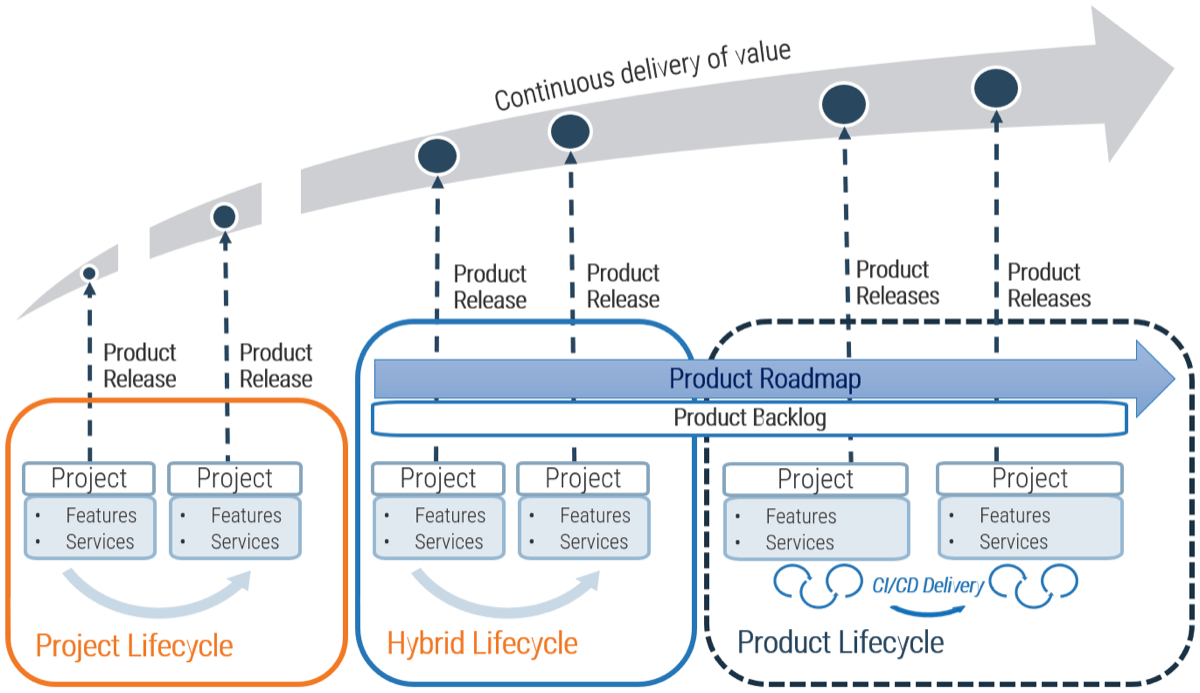
Phase 1
Build the case for product-centric delivery
Phase 1
1.1 Define product
1.2 Define your drivers and goals
1.3 Understand the role of product ownership
1.4 Communicate what comes next
1.5 Make the case to your stakeholders
This phase will walk you through the following activities:
- Define product in your context.
- Define your drivers and goals for moving to product delivery.
- Understand the role of product ownership.
- Communicate what comes next for your transition to product.
- Lay out the case to your stakeholders.
This phase involves the following participants:
- Product owners
- Product managers
- Development team leads
- Portfolio managers
- Business analysts
Step 1.1
Define product
Activities
- 1.1.1 Define “product” in your context
- 1.1.2 Consider examples of what is (and is not) a product in your organization
- 1.1.3 Identify the differences between project and product delivery
This step involves the following participants:
- Product owners
- Product managers
- Development team leads
- Portfolio managers
- Business analysts
Outcomes of this step
- A clear definition of product in your organization’s context.
Make the Case for Product Delivery
| Step 1.1 | Step 1.2 | Step 1.3 | Step 1.4 | Step 1.5 |
Exercise 1.1.1 Define “product” in your context
30-60 minutes
Output: Your enterprise/organizational definition of products and services
Participants: Product owners, Product managers, Development team leads, Portfolio managers, Business analysts
- Discuss what “product” means in your organization.
- Create a common, enterprise-wide definition for “product.”
| “A product [is] something (physical or not) that is created through a process and that provides benefits to a market.” (Mike Cohn, Founding Member of Agile Alliance and Scrum Alliance) | “A product is something ... that is created and then made available to customers, usually with a distinct name or order number.” (TechTarget) | “A product is the physical object ... , software or service from which customer gets direct utility plus a number of other factors, services, and perceptions that make the product useful, desirable [and] convenient.” (Mark Curphey) |
Record the results in the Make the Case for Product-Centric Delivery Workbook.
Example: What is a product?
Not all organizations will define products in the same way. Take this as a general example:
“A tangible solution, tool, or service (physical or digital) that enables the long-term and evolving delivery of value to customers and stakeholders based on business and user requirements.”Info-Tech InsightA proper definition of product recognizes three key facts:
|  |
How do we know what is a product?
What isn’t a product:
|
You have a product if the given item...
|
Exercise 1.1.2 Consider examples of what is (and is not) a product in your organization
15 minutesOutput: Examples of what is and isn’t a product in your specific context.
Participants: Product owners, Product managers, Development team leads, Portfolio managers, Business analysts
- Leverage the definition you created in exercise 1.1.1 and the explanation on the slide What is a product?
- Pick examples that effectively show the difference between products and non-products and facilitate a conversation on the ones that seem to be on the line. Specific server instances, or instances of providing a service, are worthwhile examples to consider.
- From the list you come up with, take the top three examples and put them into the Make the Case for Product Delivery Presentation Template.
What isn’t a product?
|
What is a product?
|
Record the results in the Make the Case for Product Delivery Workbook.
Product delivery practices should consider everything required to support it, not just what users see.
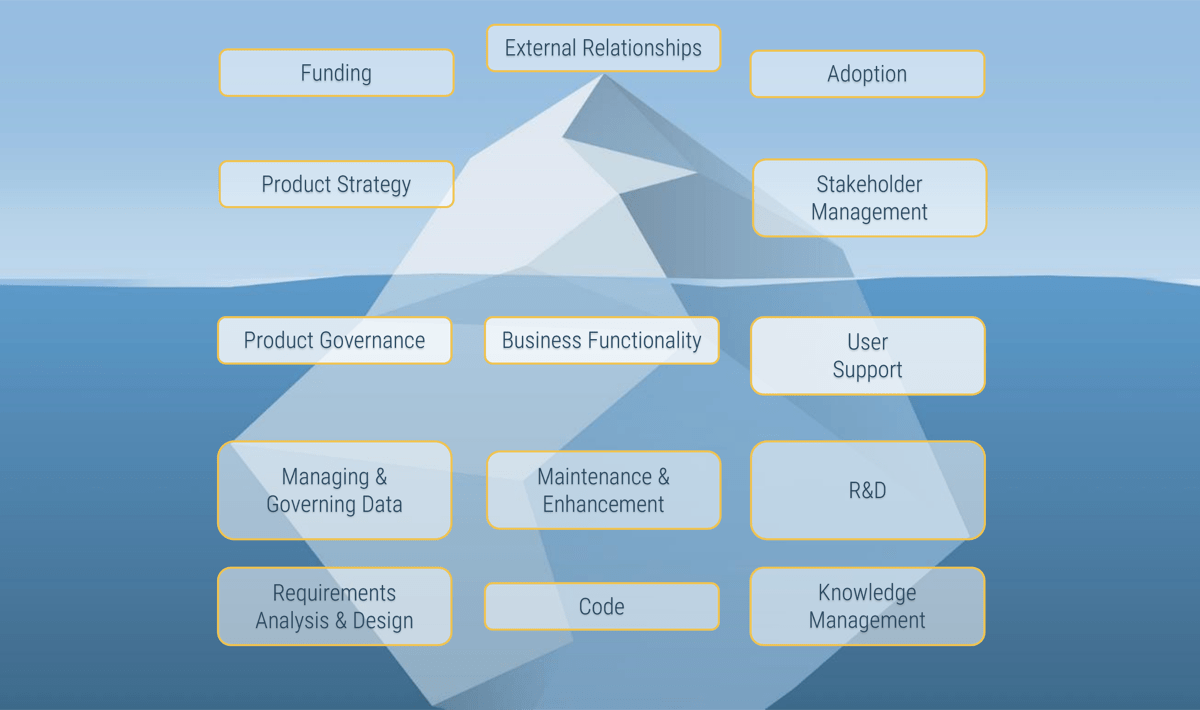
Products and services share the same foundation and best practices
| For the purpose of this blueprint, product/service and product owner/service owner are used interchangeably. Product is used for consistency but would apply to services as well.
|
“Product” and “service” are terms that each organization needs to define to fit its culture and customers (internal and external). The most important aspect is consistent use and understanding of:
|
Exercise 1.1.3 Identify the differences between project and product delivery
30-60 minutes
Output: List of differences between project and product delivery
Participants: Product owners, Product managers, Development team leads, Portfolio managers, Business analysts
- Consider project delivery and product delivery.
- Discuss what some differences are between the two.
Note: This exercise is not about identifying the advantages and disadvantages of each style of delivery. This is to identify the variation between the two.
| Theme | Project Delivery (Current) | Product Delivery (Future) |
| Timing | Defined start and end | Does not end until the product is no longer needed |
| Funding | Funding projects | Funding products and teams |
| Prioritization | LoB sponsors | Product owner |
| Capacity Management | Project management | Managed by product team |
Record the results in the Make the Case for Product Delivery Workbook.
Identify the differences between a project-centric and a product-centric organization
| Project | Product | |
| Fund projects | — Funding –› | Fund products or teams |
| Line of business sponsor | — Prioritization –› | Product owner |
| Makes specific changes to a product | —Product management –› | Improves product maturity and support |
| Assignment of people to work | — Work allocation –› | Assignment of work to product teams |
| Project manager manages | — Capacity management –› | Team manages capacity |
Info-Tech Insights
- Product ownership should be one of your first areas of focus when transitioning from project to product delivery.
- Product delivery requires significant shifts in the way you complete development work and deliver value to your users. Make the changes that support improving end-user value and enterprise alignment.
Projects can be a mechanism for funding product changes and improvements
 |
Projects within products
Regardless of whether you recognize yourself as a product-based or project-based shop, the same basic principles should apply. The purpose of projects is to deliver the scope of a product release. The shift to product delivery leverages a product roadmap and backlog as the mechanism for defining and managing the scope of the release. Eventually, teams progress to continuous integration/continuous delivery (CI/CD) where they can release on demand or as scheduled, requiring org change management. |
Step 1.2
Define your drivers and goals
Activities
- 1.2.1 Understand your drivers for product-centric delivery
- 1.2.2 Define the goals for your product-centric organization
This step involves the following participants:
- Product owners
- Product managers
- Development team leads
- Portfolio managers
- Business analysts
Outcomes of this step
- A clear understanding of your motivations and desired outcomes for moving to product delivery.
Make the Case for Product Delivery
| Step 1.1 | Step 1.2 | Step 1.3 | Step 1.4 | Step 1.5 |
Exercise 1.2.1 Understand your drivers for product-centric delivery
30-60 minutes
Output: Organizational drivers to move to product-centric delivery.
Participants: Product owners, Product managers, Development team leads, Portfolio managers, Business analysts
- Identify your pain points in the current delivery model.
- What is the root cause of these pain points?
- How will a product-centric delivery model fix the root cause (drivers)?
Pain Points
|
Root Causes
|
Drivers
|
Record the results in the Make the Case for Product Delivery Workbook.
Exercise 1.2.2 Define the goals for your product-centric organization
30 minutes
Output: Goals for product-centric delivery
Participants: Product owners, Product managers, Development team leads, Portfolio managers, Business analysts
- Review the differences between project and product delivery from exercise 1.1.3 and the list of drivers from exercise 1.2.1.
- Define your goals for achieving a product-centric organization.
Note: Your drivers may have already covered the goals. If so, review if you would like to change the drivers based on your renewed understanding of the differences between project and product delivery.
Pain Points
| Root Causes
| Drivers
| Goals
|
Record the results in the Make the Case for Product Delivery Workbook.
Step 1.3
Understand the role of product ownership
Activities
- 1.3.1 Identify product ownership capabilities
This step involves the following participants:
- Product owners
- Product managers
- Development team leads
- Portfolio managers
- Business analysts
Outcomes of this step
- Product owner capabilities that you agree are critical to start your product transformation.
Make the Case for Product Delivery
| Step 1.1 | Step 1.2 | Step 1.3 | Step 1.4 | Step 1.5 |
Accountability for the delivery of value through product ownership is not optional
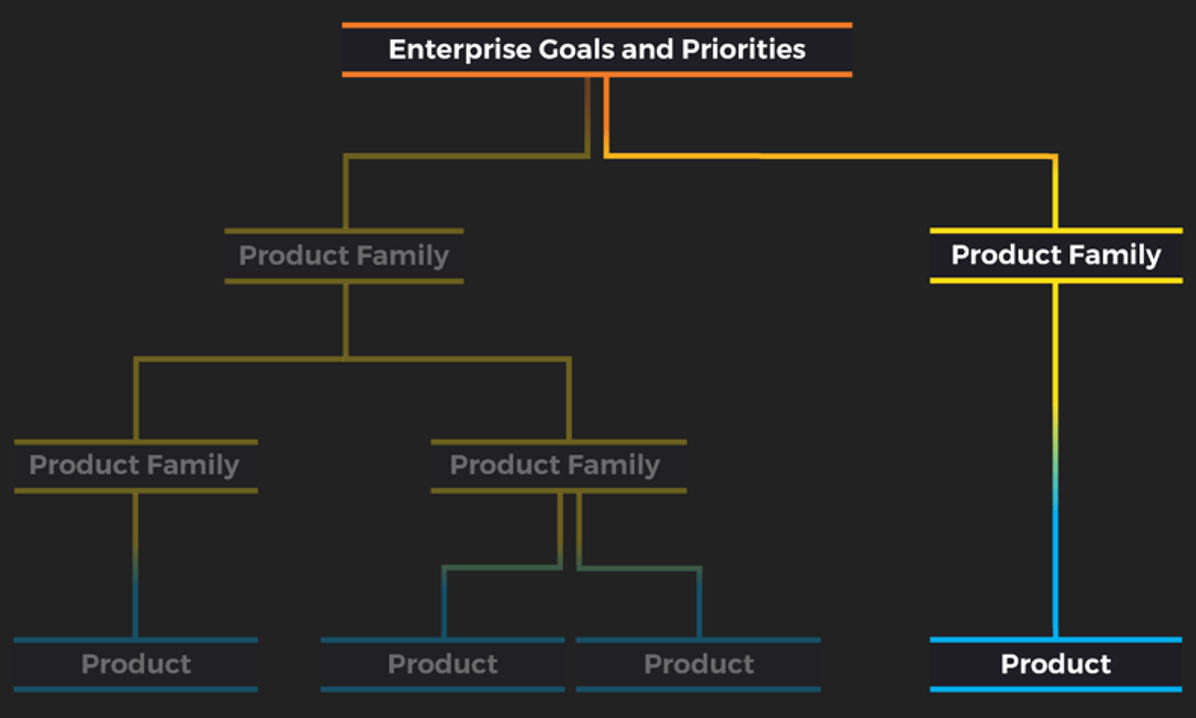 Info-Tech InsightPeople treat the assignment of accountability for products (aka product ownership) as optional. Without assigning accountability up front, your transition to product delivery will stall. Accountable individuals will be focused on the core outcome for product delivery, which is the delivery of the right value, at the right time, to the right people. | 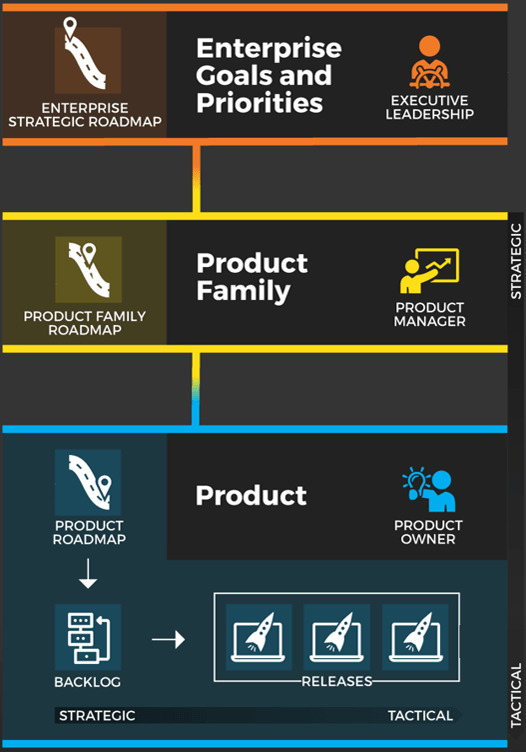 |
Recognize the different product owner perspectives
Business
|
Technical
|
Operations
|
Info-Tech Best Practice
Product owners must translate needs and constraints from their perspective into the language of their audience. Kathy Borneman, Digital Product Owner at SunTrust Bank, noted the challenges of finding a common language between lines of business and IT (e.g. what is a unit?).
Info-Tech Insight
Recognize that product owners represent one of three primary perspectives. Although all share the same capabilities, how they approach their responsibilities is influenced by their perspective.
“A Product Owner in its most beneficial form acts like an Entrepreneur, like a 'mini-CEO'. The Product Owner is someone who really 'owns' the product.” (Robbin Schuurman, “Tips for Starting Product Owners”)
Implement the Info-Tech product owner capability model
| As discussed in Build a Better Product Owner, most product owners operate with an incomplete knowledge of the skills and capabilities needed to perform the role. Common gaps include focusing only on product backlogs, acting as a proxy for product decisions, and ignoring the need for key performance indicators (KPIs) and analytics in both planning and value realization. | 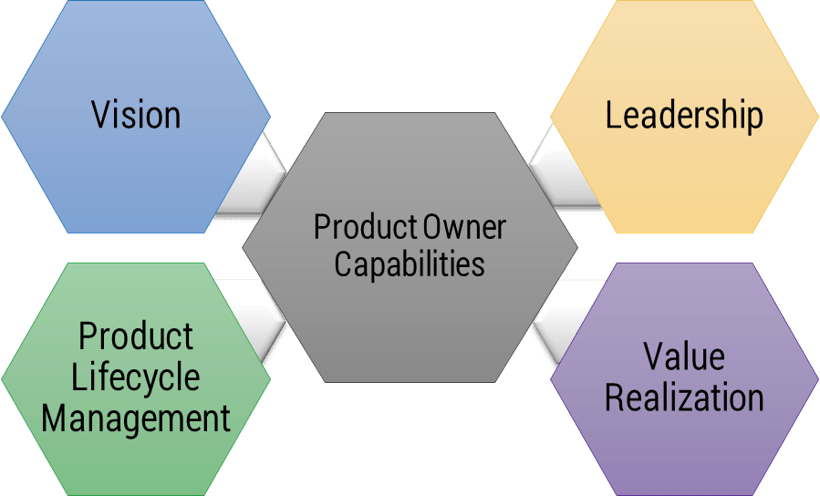 |
||||
|
|||||
Details on product ownership capabilities can be found in the appendix.
Exercise 1.3.1 Identify product ownership capabilities
60 minutes
Output: Product owner capability mapping
Participants: Product owners, Product managers, Development team leads, Portfolio managers, Business analysts
- Write down the capabilities product owners need to perform their duties (one per sticky note) in order to describe product ownership in your organization. Consider people, processes, and tools.
- Mark each capability with a plus (current capability), circle (some proficiency), or dash (missing capability).
- Discuss each capability and place on the appropriate quadrant.

Record the results in the Make the Case for Product Delivery Workbook.
Differentiate between product owners and product managers
Product Owner (Tactical Focus)
|
Product Manager (Strategic Focus)
|
Info-Tech Insight
“Product owner” and “product manager” are terms that should be adapted to fit your culture and product hierarchy. These are not management relationships but rather a way to structure related products and services that touch the same end users.
Step 1.4
Communicate what comes next
Activities
- 1.4.1 How do we get started?
This step involves the following participants:
- Product owners
- Product managers
- Development team leads
- Portfolio managers
- Business analysts
Outcomes of this step
- A now, next, later roadmap indicating your overall next steps.
Make the Case for Product Delivery
| Step 1.1 | Step 1.2 | Step 1.3 | Step 1.4 | Step 1.5 |
Make a plan in order to make a plan!
Consider some of the techniques you can use to validate your strategy. |
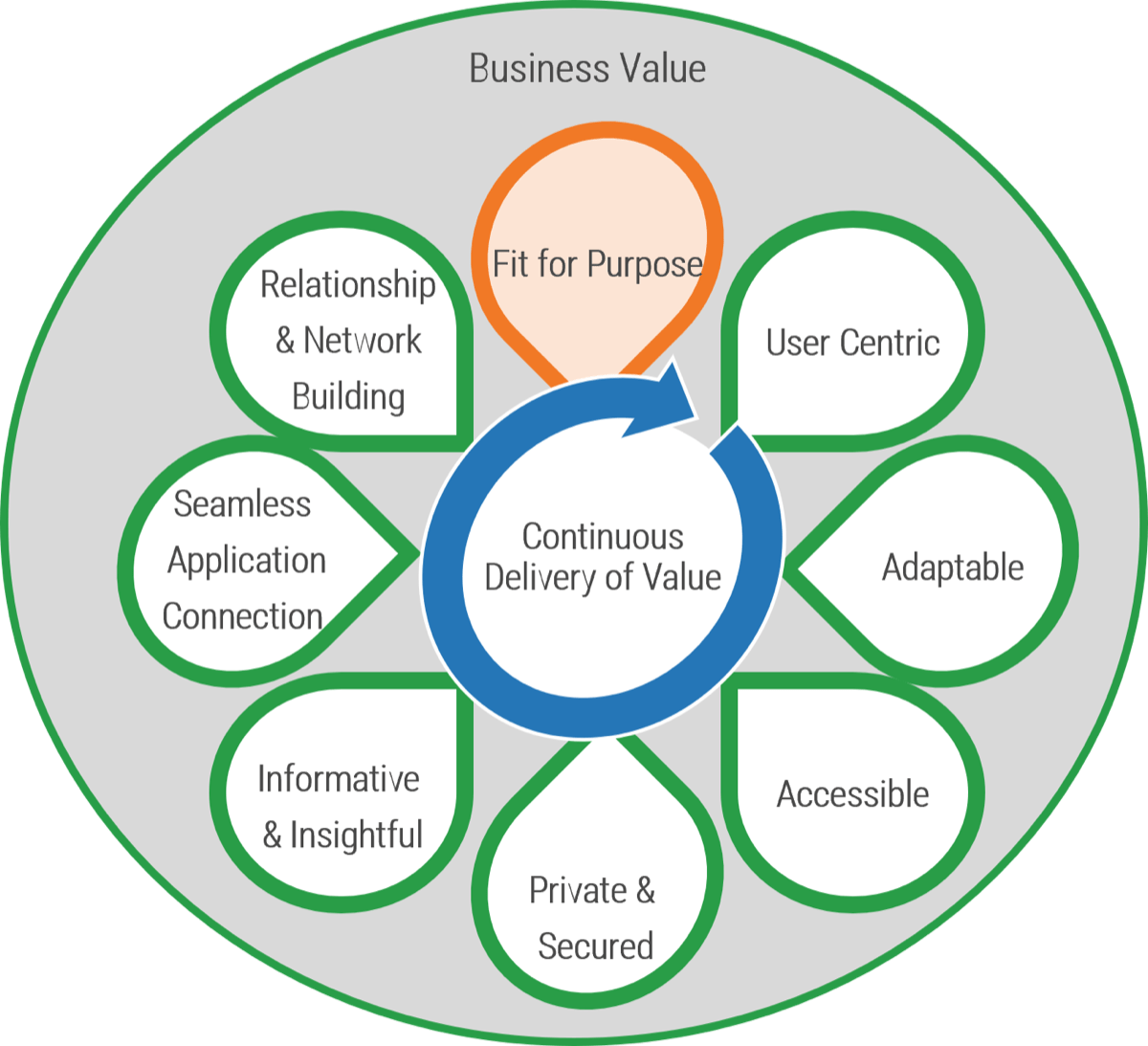
Go to your backlog and prioritize the elements that need to be answered sooner rather than later. Possible areas of focus:
|
|
| Learning Milestones
The completion of a set of artifacts dedicated to validating business opportunities and hypotheses. Possible areas of focus:
 |
Sprint Zero (AKA Project-before-the-project)
The completion of a set of key planning activities, typically the first sprint. Possible areas of focus:
 |
|
The “Now, Next, Later” roadmap
Use this when deadlines and delivery dates are not strict. This is best suited for brainstorming a product plan when dependency mapping is not required.
|
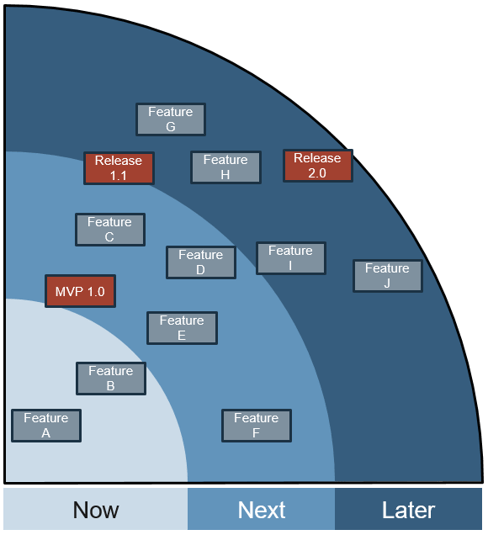
(Source: “Tips for Agile product roadmaps & product roadmap examples,” Scrum.org, 2017) |
Exercise 1.4.1 How do we get started?
30-60 minutes
Output: Product transformation critical steps and basic roadmap
Participants: Product owners, Product managers, Development team leads, Portfolio managers, Business analysts
|

(Source: “Tips for Agile product roadmaps & product roadmap examples,” Scrum.org, 2017) |
Record the results in the Make the Case for Product Delivery Workbook.
Example
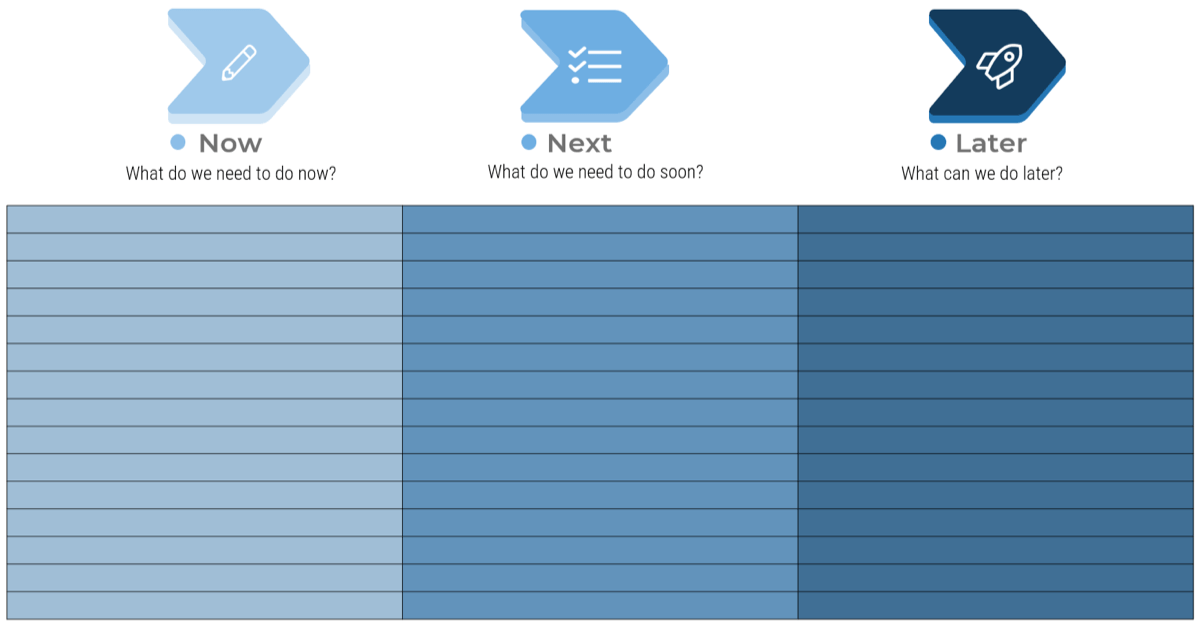
Step 1.5
Make the case to your stakeholders
Activities
- 1.5.1 Identify what support you need from your stakeholders
- 1.5.2 Build your pitch for product delivery
This step involves the following participants:
- Product owners
- Product managers
- Development team leads
- Portfolio managers
- Business analysts
Outcomes of this step
- A deliverable that helps make the case for product delivery.
Make the Case for Product Delivery
| Step 1.1 | Step 1.2 | Step 1.3 | Step 1.4 | Step 1.5 |
Develop a stakeholder strategy to define your product owner landscape
Stakeholder InfluenceStakeholders are a critical cornerstone to product ownership. They provide the context, alignment, and constraints that influence or control what a product owner is able to accomplish. Product teams operate within this network of stakeholders who represent different perspectives within the organization. See the appendix for activities and guidance on how to devise a strategy for managing stakeholders. |
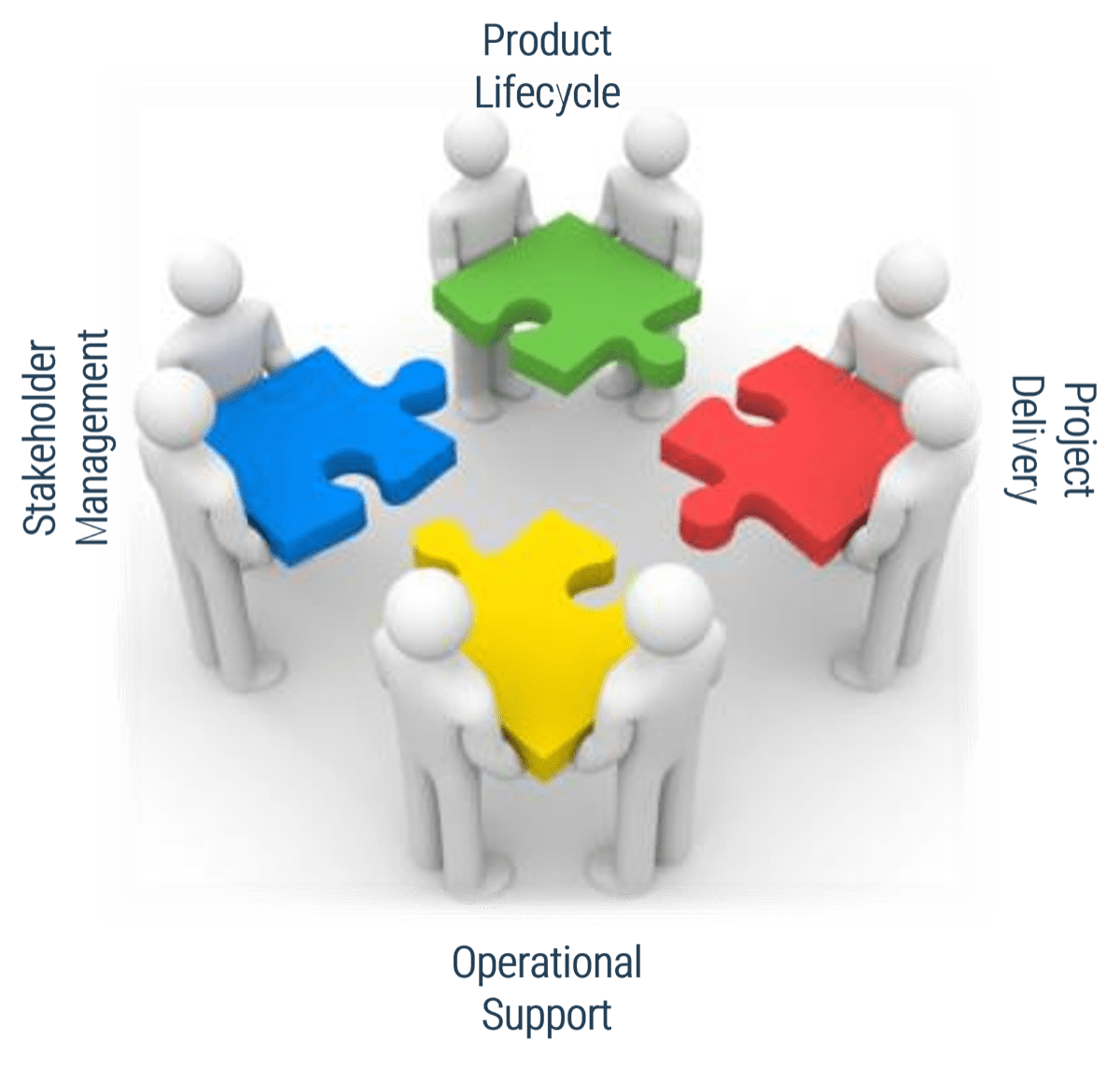 |
Exercise 1.5.1 Identify what support you need from your stakeholders
30 minutes
Output: Clear understanding of stakeholders, what they need from you, and what you need from them.
Participants: Product owners, Product managers, Development team leads, Portfolio managers, Business analysts
- If you don’t yet know who your stakeholders are, consider completing one or more of the stakeholder management exercises in the appendix.
- Identify your key stakeholders who have an interest in solution delivery.
- Consider their perspective on product-centric delivery. (For example: For head of support, what does solution delivery mean to them?)
- Identify what role each stakeholder would play in the transformation.
- This role represents what you need from them for this transformation to product-centric delivery.
| Stakeholder
|
What does solution delivery mean to them?
|
What do you need from them in order to be successful?
|
Record the results in the Make the Case for Product Delivery Workbook.
Exercise 1.5.2 Build your pitch deck
30 minutes (and up)
Output: A completed presentation to help you make the case for product delivery.
Participants: Product owners, Product managers, Development team leads, Portfolio managers, Business analysts
- Take the results from the Make the Case for Product Delivery Workbook and transfer them into the presentation template.
- Follow the instructions on each page listed in the instruction bubbles to know what results to place where.
- This is meant to be a template; you are welcome to add and remove slides as needed to suit your audience!
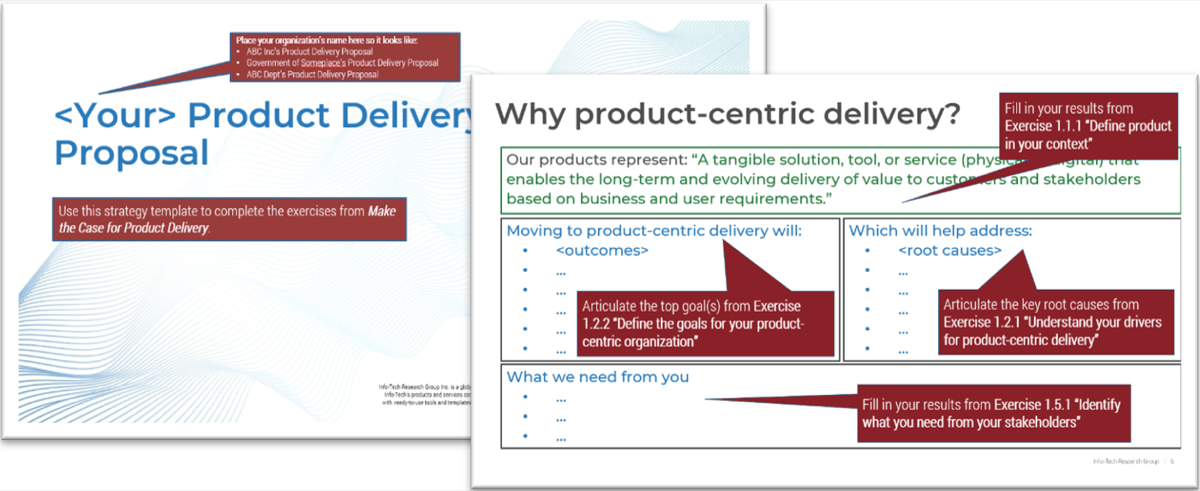
Record the results in the Make the Case for Product Delivery Workbook.
Appendix
Additional research to start your journey
Related Info-Tech Research
Product DeliveryDeliver on Your Digital Product Vision
Build Your Agile Acceleration Roadmap
Implement Agile Practices That Work
Implement DevOps Practices That Work
|
Deliver Digital Products at Scale
Extend Agile Practices Beyond IT
Embed Security Into the DevOps Pipeline
Spread Best Practices With an Agile Center of Excellence
|
Related Info-Tech Research
Application Portfolio Management
Application Portfolio Management (APM) Research Center
Application Portfolio Management for Small Enterprises
Streamline Application Maintenance
Build an Application Rationalization Framework
| Review Your Application Strategy
Application Portfolio Management Foundations
Streamline Application Management
Optimize Applications Release Management
Embrace Business-Managed Applications
|
Related Info-Tech Research
Value, Delivery Metrics, Estimation
Build a Value Measurement Framework
Select and Use SDLC Metrics Effectively
Application Portfolio Assessment: End User Feedback
Create a Holistic IT Dashboard
Refine Your Estimation Practices With Top-Down Allocations
| Estimate Software Delivery With Confidence
Reduce Time to Consensus With an Accelerated Business Case
Optimize IT Project Intake, Approval, and Prioritization
Enhance PPM Dashboards and Reports
|
Related Info-Tech Research
Org Design and Performance
Redesign Your IT Organizational Structure
Build a Strategic IT Workforce Plan
Implement a New IT Organizational Structure
|
Build an IT Employee Engagement Program
Set Meaningful Employee Performance Measures
Master Organizational Change Management Practices
|
Appendix
Product delivery strategy communication
Product roadmaps guide delivery and communicate your strategy
In Deliver on Your Digital Product Vision, we demonstrate how the product roadmap is core to value realization. The product roadmap is your communicated path, and as a product owner, you use it to align teams and changes to your defined goals while aligning your product to enterprise goals and strategy.
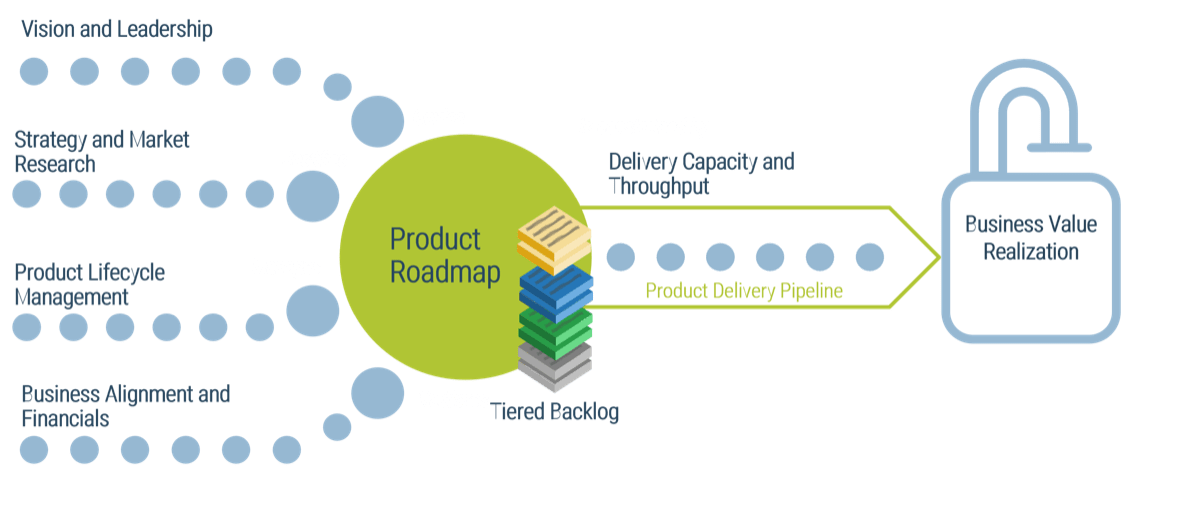
(Adapted from: Pichler, “What Is Product Management?”)
Info-Tech Insight
The quality of your product backlog – and your ability to realize business value from your delivery pipeline – is directly related to the input, content, and prioritization of items in your product roadmap.
Define product value by aligning backlog delivery with roadmap goals
In each product plan, the backlogs show what you will deliver.
Roadmaps identify when and in what order you will deliver value, capabilities, and goals.
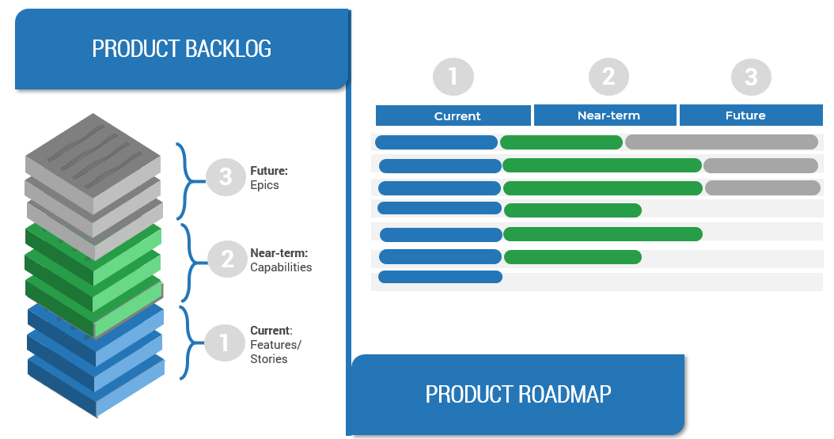
Multiple roadmap views can communicate differently, yet tell the same truth
| Product managers and product owners have many responsibilities, and a roadmap can be a useful tool to complete those objectives through communication or organization of tasks.
However, not all roadmaps address the correct audience and achieve those objectives. Care must be taken to align the view to the given audience.
|
|
Appendix
Managing stakeholder influence
Step 1.3 (from Build a Better Product Owner)
Manage Stakeholder Influence
Activities
- 1.3.1 Visualize interrelationships to identify key influencers
- 1.3.2 Group your product owners into categories
- 1.3.3 Prioritize your stakeholders
- 1.3.4 Delegation Poker: Reach better decisions
This step will walk you through the following activities:
To be successful, product owners need to identify and manage all stakeholders for their products. This step will build a stakeholder map and strategy.
This step involves the following participants:
- Product owners
- Product managers
- Development team leads
- Portfolio managers
- Delivery managers
- Business analysts
Outcomes of this step
- Relationships among stakeholders and influencers
- Categorization of stakeholders and influencers
- Stakeholder and influencer prioritization
- Better understanding of decision-making approaches and delegation
| Step 1.1 | Step 1.2 | Step 1.3 |
Develop a product owner stakeholder strategy
| Stakeholder Influence Stakeholders are a critical cornerstone to product ownership. They provide the context, alignment, and constraints that influence or control what a product owner is able to accomplish. Product owners operate within this network of stakeholders who represent different perspectives within the organization. First, product owners must identify members of their stakeholder network. Next, they should devise a strategy for managing stakeholders. Without accomplishing these missing pieces, product owners will encounter obstacles, resistance, or unexpected changes. |  |
Create a stakeholder network map to product roadmaps and prioritization
Follow the trail of breadcrumbs from your direct stakeholders to their influencers to uncover hidden stakeholders.
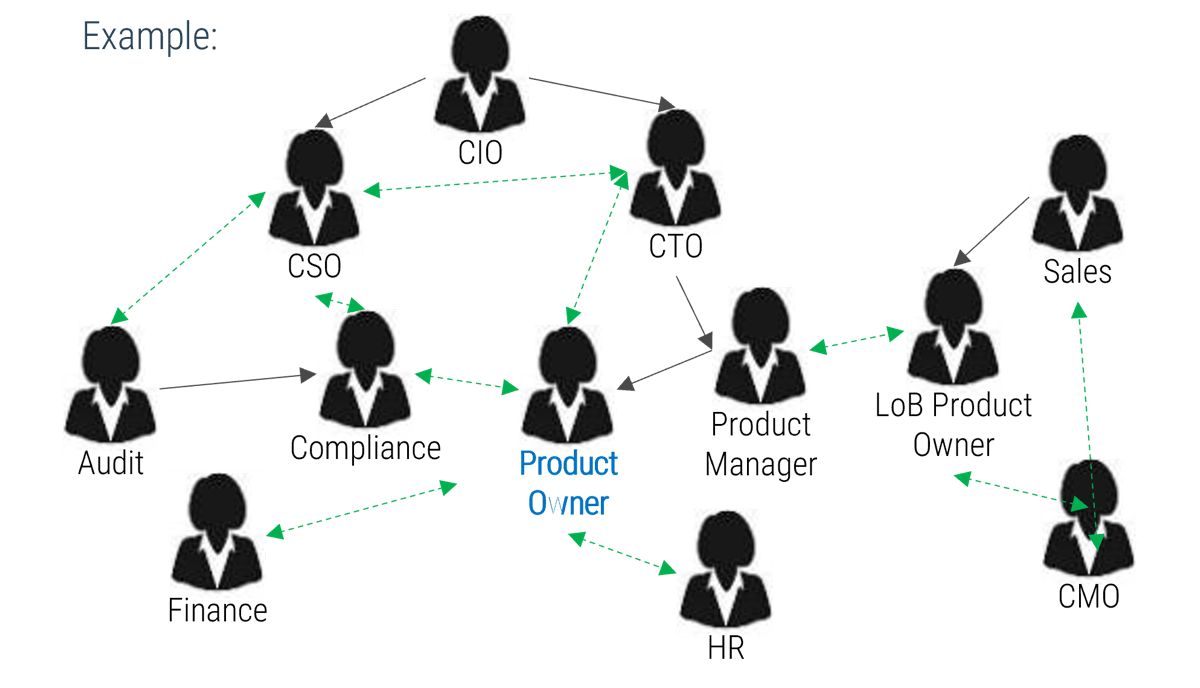 |
|
||||||
Info-Tech Insight
Your stakeholder map defines the influence landscape your product operates in. It is every bit as important as the teams who enhance, support, and operate your product directly.
Use “connectors” to determine who may be influencing your direct stakeholders. They may not have any formal authority within the organization, but they may have informal yet substantive relationships with your stakeholders.
1.3.1 Visualize interrelationships to identify key influencers
60 minutes
Input: List of product stakeholders
Output: Relationships among stakeholders and influencers
Materials: Whiteboard/flip charts, Markers, Build a Better Product Owner Workbook
Participants: Product owners, Product managers, Development team leads, Portfolio managers, Business analysts
- List direct stakeholders for your product.
- Determine the stakeholders of your stakeholders and consider adding each of them to the stakeholder list.
- Assess who has either formal or informal influence over your stakeholders; add these influencers to your stakeholder list.
- Construct a diagram linking stakeholders and their influencers together.
- Use black arrows to indicate the direction of professional influence.
- Use dashed green arrows to indicate bidirectional, informal influence relationships.
- Record the results in the Build a Better Product Owner Workbook.
Record the results in the Build a Better Product Owner Workbook.
Categorize your stakeholders with a prioritization map
| A stakeholder prioritization map helps product owners categorize their stakeholders by their level or influence and ownership in the product and/or teams.
|
There are four areas in the map, and the stakeholders within each area should be treated differently.
|
1.3.2 Group your product owners into categories
30 minutes
Input: Stakeholder map
Output: Categorization of stakeholders and influencers
Materials: Whiteboard/flip charts, Markers, Build a Better Product Owner Workbook
Participants: Product owners, Product managers, Development team leads, Portfolio managers, Business analysts
|
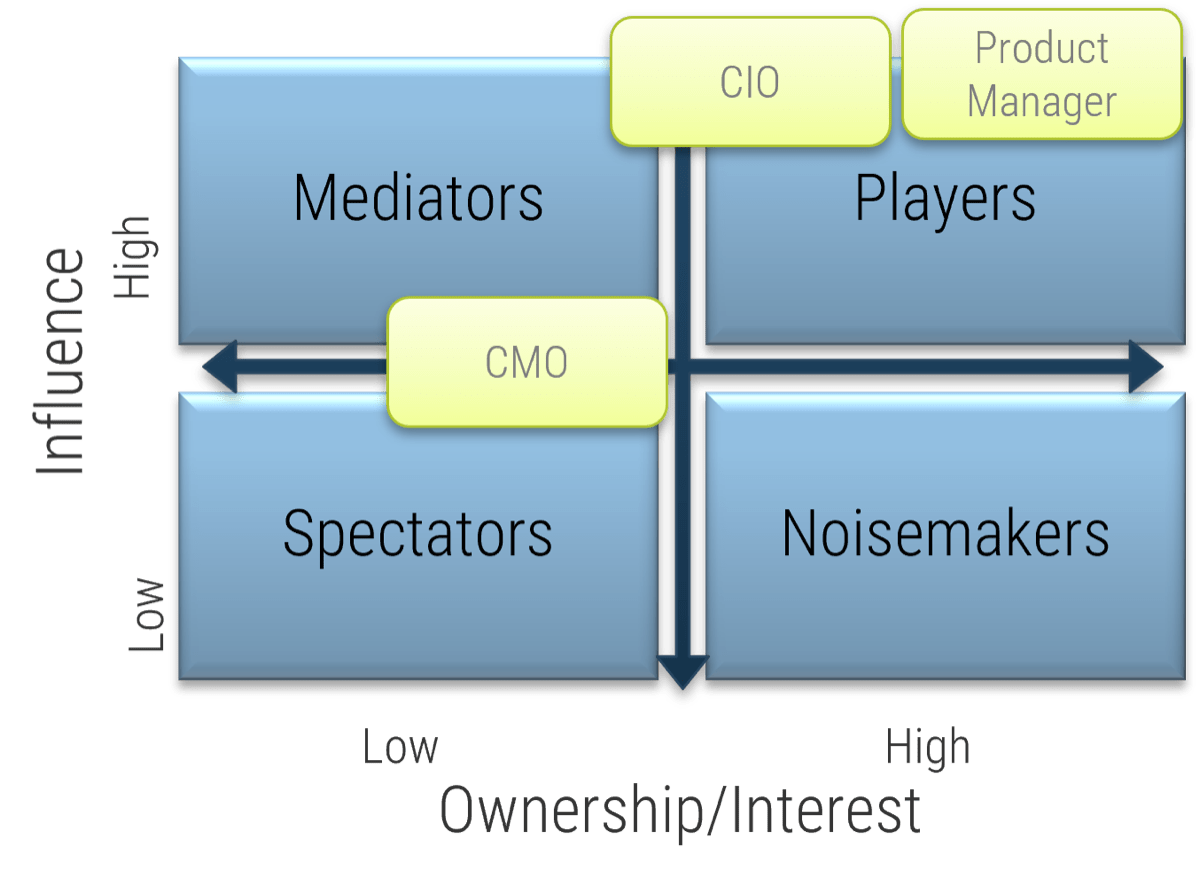 |
Level of Influence
|
Level of Interest
How much are the stakeholder’s individual performance and goals directly tied to the success or failure of the product? |
Record the results in the Build a Better Product Owner Workbook.
Prioritize your stakeholders
There may be too many stakeholders to be able to manage them all. Focus your attention on the stakeholders that matter most.
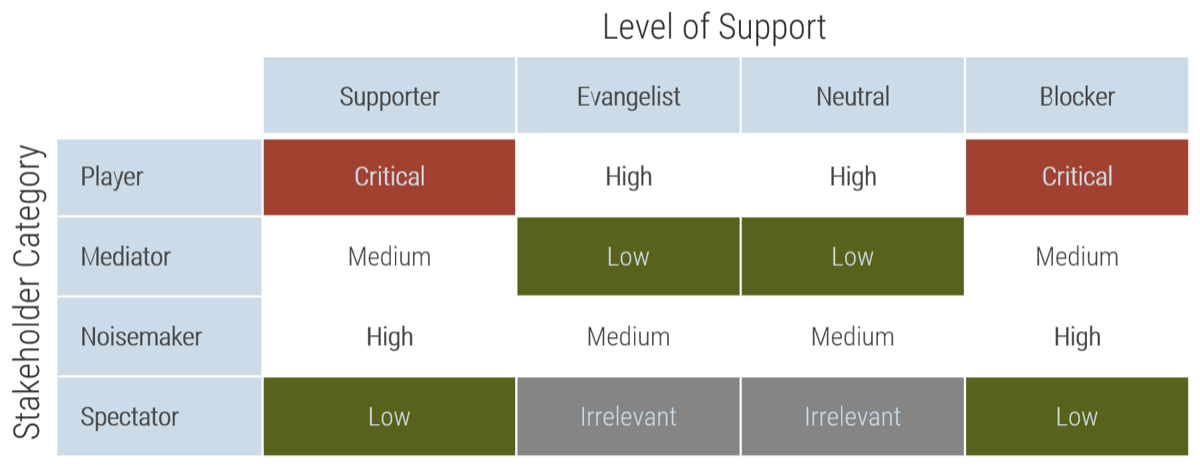
Consider the three dimensions for stakeholder prioritization: influence, interest, and support. Support can be determined by rating the following question: how likely is it that your stakeholder would recommend your product? These parameters are used to prioritize which stakeholders are most important and should receive the focus of your attention. The table to the right indicates how stakeholders are ranked.
1.3.3 Prioritize your stakeholders
30 minutes
Input: Stakeholder matrix, Stakeholder prioritization
Output: Stakeholder and influencer prioritization
Materials: Whiteboard/flip charts, Markers, Build a Better Product Owner Workbook
Participants: Product owners, Product managers, Development team leads, Portfolio managers, Business analysts
- Identify the level of support of each stakeholder by answering the following question: how likely is it that your stakeholder would endorse your product?
- Prioritize your stakeholders using the prioritization scheme on the previous slide.
- Record the results in the Build a Better Product Owner Workbook.
| Stakeholder | Category | Level of Support | Prioritization |
| CMO | Spectator | Neutral | Irrelevant |
| CIO | Player | Supporter | Critical |
Record the results in the Build a Better Product Owner Workbook.
Define strategies for engaging stakeholders by type
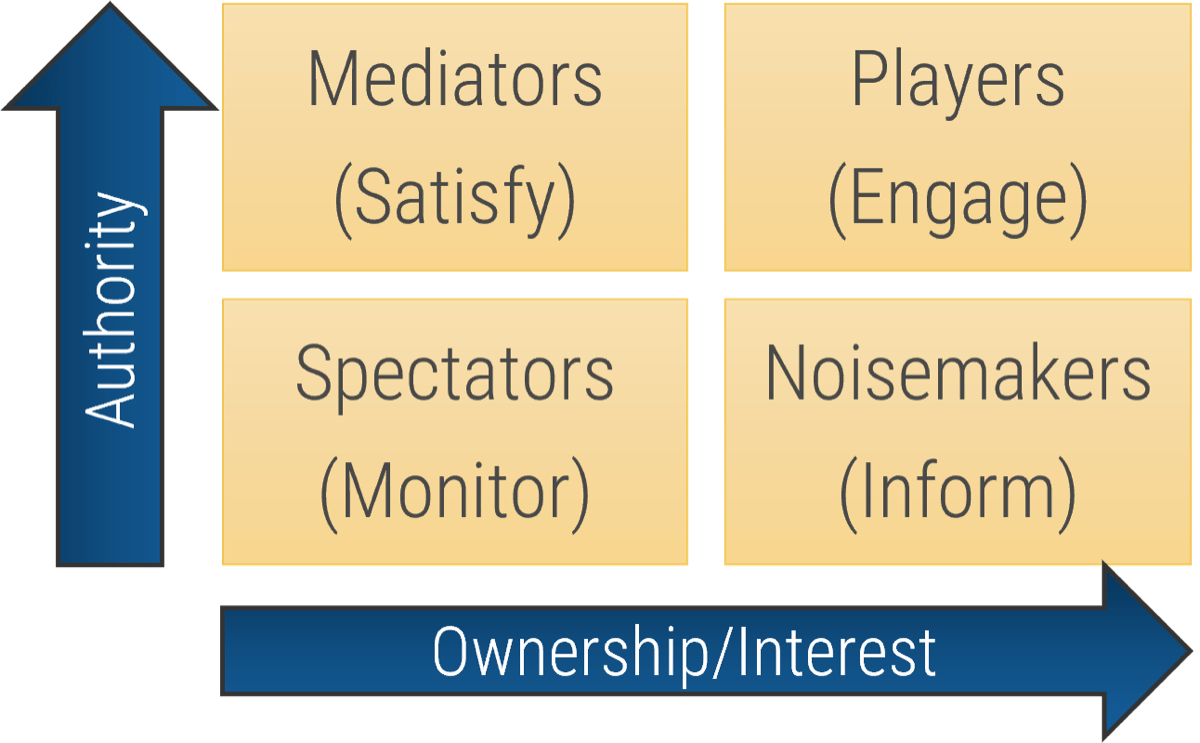 Info-Tech InsightEach group of stakeholders draws attention and resources away from critical tasks. By properly identifying your stakeholder groups, the product owner can develop corresponding actions to manage stakeholders in each group. This can dramatically reduce wasted effort trying to satisfy Spectators and Noisemakers, while ensuring the needs of the Mediators and Players are met. |
|
Appendix
Product owner capability details
Develop product owner capabilities
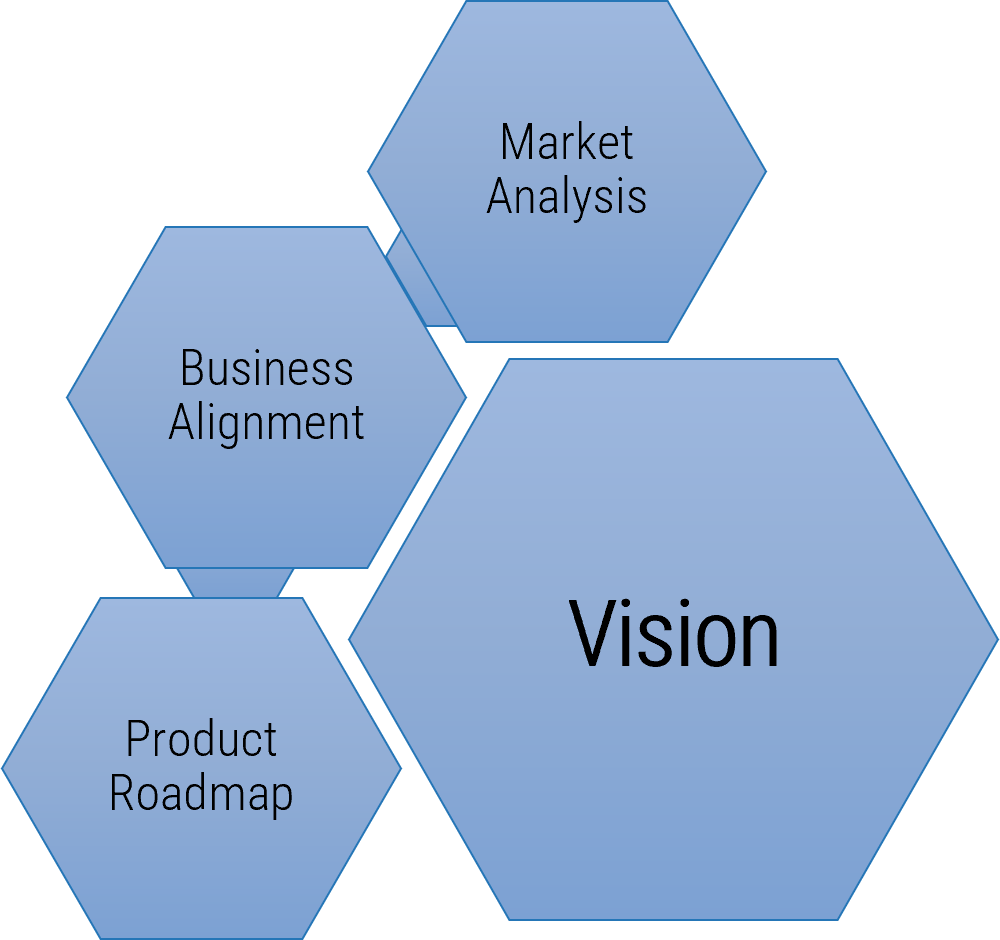 |
Each capability has three components needed for successful product ownership. Definitions are on the following slides.
Define the skills and activities in each component that are directly related to your product and culture. |
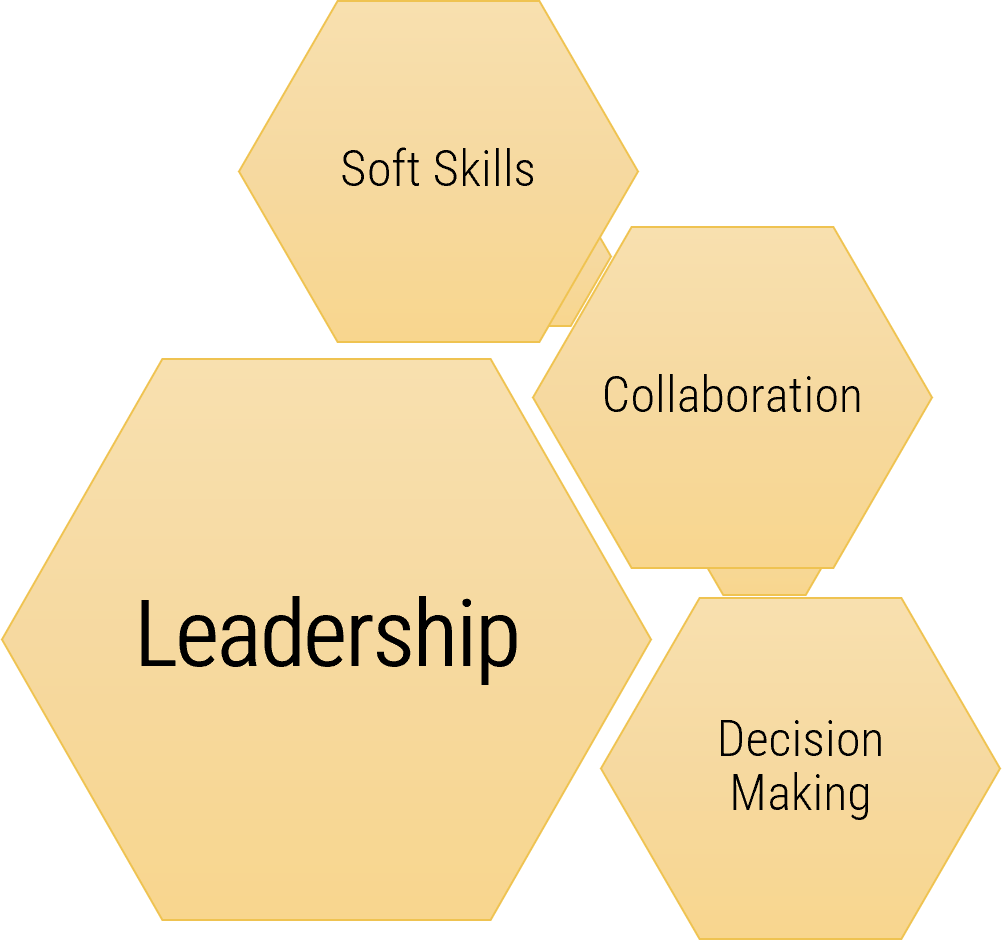 |
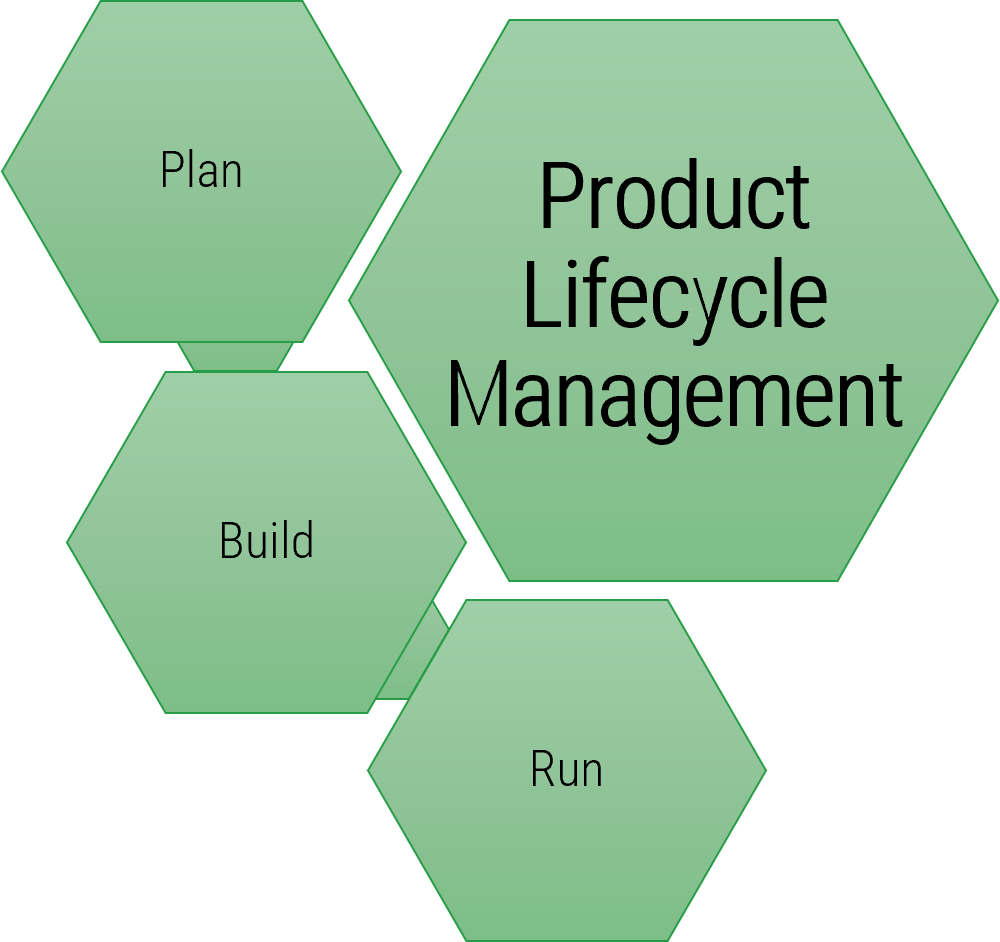 |
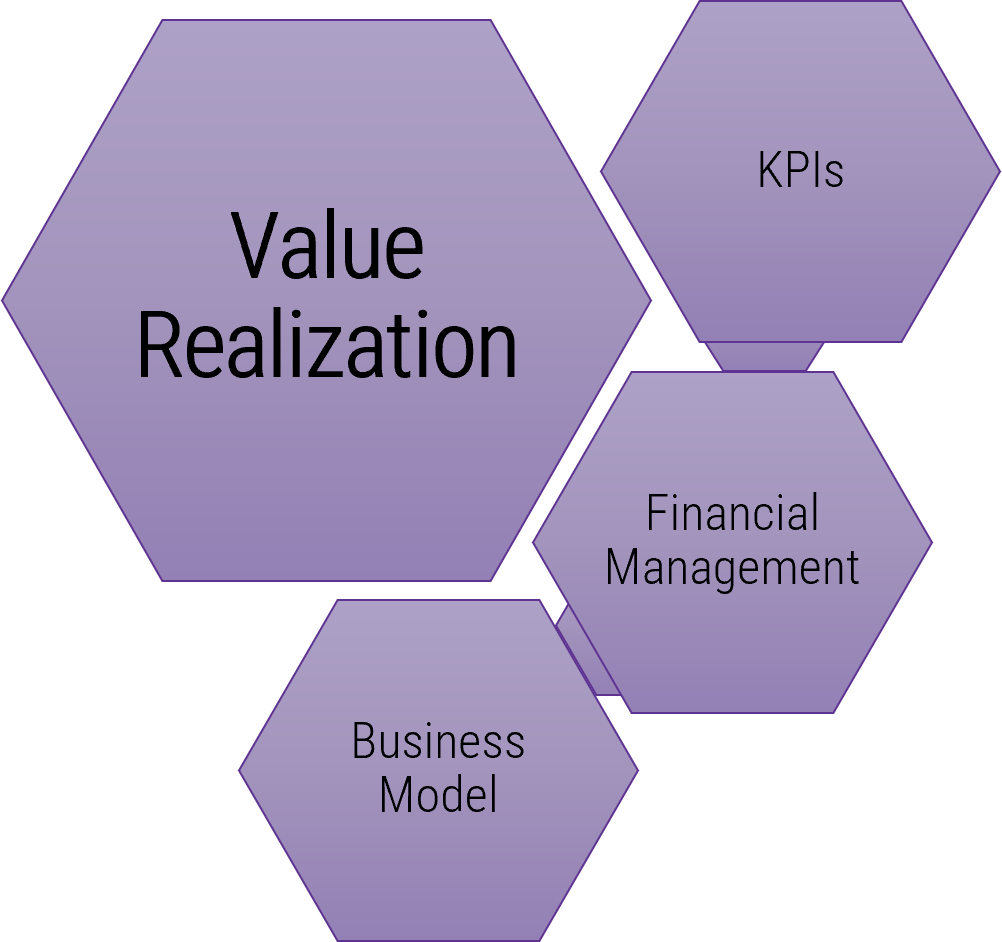 |
Capabilities: Vision
Market Analysis
Business Alignment
Product Roadmap
| Info-Tech InsightData comes from many places and may still not tell the complete story.
“Customers are best heard through many ears.” (Thomas K. Connellan, Inside the Magic Kingdom) |
Capabilities: Leadership
Soft Skills
Collaboration
Decision Making
| Info-Tech InsightProduct owners cannot be just a proxy for stakeholder decisions. The product owner owns product decisions and management of all stakeholders.
“Everything walks the walk. Everything talks the talk.” (Thomas K. Connellan, Inside the Magic Kingdom) |
Capabilities: Product lifecycle management
Plan
Build
Run
| Info-Tech InsightProduct owners must actively manage the full lifecycle of the product.
“Pay fantastic attention to detail. Reward, recognize, celebrate.” (Thomas K. Connellan, Inside the Magic Kingdom) |
Capabilities: Value realization
Key Performance Indicators (KPIs)
Financial Management
Business Model
| Info-Tech InsightMost organizations stop with on-time and on-budget. True financial alignment needs to define and manage the full lifecycle P&L.
“The competition is anyone the customer compares you with.” (Thomas K. Connellan, Inside the Magic Kingdom) |
Avoid common capability gaps
Vision
|
Leadership
|
Product Lifecycle Management
|
Value Realization
|
Bibliography – Product Ownership
A, Karen. “20 Mental Models for Product Managers.” Medium, Product Management Insider, 2 Aug. 2018. Web.
Adams, Paul. “Product Teams: How to Build & Structure Product Teams for Growth.” Inside Intercom, 30 Oct. 2019. Web.
Agile Alliance. “Product Owner.” Agile Alliance, n.d. Web.
Banfield, Richard, et al. “On-Demand Webinar: Strategies for Scaling Your (Growing) Enterprise Product Team.” Pluralsight, 31 Jan. 2018. Web.
Blueprint. “10 Ways Requirements Can Sabotage Your Projects Right From the Start.” Blueprint, 2012. Web.
Breddels, Dajo, and Paul Kuijten. “Product Owner Value Game.” Agile2015 Conference, 2015. Web.
Cagan, Martin. “Behind Every Great Product.” Silicon Valley Product Group, 2005. Web.
Cohn, Mike “What is a product?” Mountain Goat Software, 16 Sept. 2016, Web
Connellan, Thomas K. Inside the Magic Kingdom. Bard Press, 1997. Print.
Curphey, Mark, “Product Definition.” slideshare.net, 25 Feb. 2007. Web
Eringa, Ron. “Evolution of the Product Owner.” RonEringa.com, 12 June 2016. Web.
Fernandes, Thaisa. “Spotify Squad Framework - Part I.” Medium.com, 6 March 2017. Web.
Galen, Robert. “Measuring Product Ownership – What Does ‘Good’ Look Like?” RGalen Consulting, 5 Aug. 2015. Web.
Halisky, Merland, and Luke Lackrone. “The Product Owner’s Universe.” Agile Alliance, Agile2016, 2016. Web.
Kamer, Jurriaan. “How to Build Your Own ‘Spotify Model’.” Medium.com, 9 Feb. 2018. Web.
Kendis Team. “Exploring Key Elements of Spotify’s Agile Scaling Model.” Medium.com, 23 July 2018. Web.
Lindstrom, Lowell. “7 Skills You Need to Be a Great Product Owner.” Scrum Alliance, n.d. Web.
Lukassen, Chris. “The Five Belts Of The Product Owner.” Xebia.com, 20 Sept. 2016. Web.
Management 3.0. “Delegation Poker Product Image.” Management 3.0, n.d. Web.
McCloskey, Heather. “Scaling Product Management: Secrets to Defeating Common Challenges.” ProductPlan, 12 July 2019. Web.
Bibliography – Product Ownership
McCloskey, Heather. “When and How to Scale Your Product Team.” UserVoice, 21 Feb. 2017. Web.
Mironov, Rich. “Scaling Up Product Manager/Owner Teams: Rich Mironov's Product Bytes.” Rich Mironov's Product Bytes, Mironov Consulting, 12 April 2014 . Web.
Overeem, Barry. “A Product Owner Self-Assessment.” Barry Overeem, 6 March 2017. Web.
Overeem, Barry. “Retrospective: Using the Team Radar.” Barry Overeem, 27 Feb. 2017. Web.
Pichler, Roman. “How to Scale the Scrum Product Owner.” Roman Pichler, 28 June 2016 . Web.
Pichler, Roman. “Product Management Framework.” Pichler Consulting Limited, 2014. Web.
Pichler, Roman. “Sprint Planning Tips for Product Owners.” LinkedIn, 4 Sept. 2018. Web.
Pichler, Roman. “What Is Product Management?” Pichler Consulting Limited, 26 Nov. 2014. Web.
Radigan, Dan. “Putting the ‘Flow' Back in Workflow With WIP Limits.” Atlassian, n.d. Web.
Schuurman, Robbin. “10 Tips for Product Owners on Agile Product Management.” Scrum.org, 28 Nov. 2017. Web.
Schuurman, Robbin. “10 Tips for Product Owners on (Business) Value.” Scrum.org, 30 Nov. 2017. Web.
Schuurman, Robbin. “10 Tips for Product Owners on Product Backlog Management.” Scrum.org, 5 Dec. 2017. Web.
Schuurman, Robbin. “10 Tips for Product Owners on the Product Vision.” Scrum.org, 29 Nov. 2017. Web.
Schuurman, Robbin. “Tips for Starting Product Owners.” Scrum.org, 27 Nov. 2017. Web.
Sharma, Rohit. “Scaling Product Teams the Structured Way.” Monetary Musings, 28 Nov. 2016. Web.
Bibliography – Product Ownership
Steiner, Anne. “Start to Scale Your Product Management: Multiple Teams Working on Single Product.” Cprime, 6 Aug. 2019. Web.
Shirazi, Reza. “Betsy Stockdale of Seilevel: Product Managers Are Not Afraid To Be Wrong.” Austin VOP #50, 2 Oct. 2018. Web.
“The Standish Group 2015 Chaos Report.” The Standish Group, 2015. Web.
Theus, Andre. “When Should You Scale the Product Management Team?” ProductPlan, 7 May 2019. Web.
Tolonen, Arto. “Scaling Product Management in a Single Product Company.” Smartly.io, 26 Apr. 2018. Web.
Ulrich, Catherine. “The 6 Types of Product Managers. Which One Do You Need?” Medium.com, 19 Dec. 2017. Web.
VersionOne. “12th Annual State of Agile Report.” VersionOne, 9 April 2018. Web.
Verwijs, Christiaan. “Retrospective: Do The Team Radar.” Medium.com, 10 Feb. 2017. Web.
“How do you define a product?” Scrum.org, 4 April 2017, Web.
“Product Definition.” TechTarget, Sept. 2005. Web
Bibliography – Product Roadmap
Ambysoft. “2018 IT Project Success Rates Survey Results.” Ambysoft. 2018. Web.
Bastow, Janna. “Creating Agile Product roadmaps Everyone Understands.” ProdPad, 22 Mar. 2017. Accessed Sept. 2018.
Bastow, Janna. “The Product Tree Game: Our Favorite Way To Prioritize Features.” ProdPad, 21 Feb. 2016. Accessed Sept. 2018.
Chernak, Yuri. “Requirements Reuse: The State of the Practice.” 2012, Herzlia, Israel, 2012 IEEE International Conference on Software Science, Technology and Engineering, 12 June 2012. Web.
Fowler, Martin. “Application Boundary.” MartinFowler.com, 11 Sept. 2003. Accessed 20 Nov. 2017.
Harrin, Elizabeth. “Learn What a Project Milestone Is.” The Balance Careers, 10 May 2018. Accessed Sept. 2018.
“How to create a product roadmap.” Roadmunk, n.d. Accessed Sept. 2018.
Johnson, Steve. “How to Master the 3 Horizons of Product Strategy.” Aha!, 24 Sept. 2015. Accessed Sept. 2018.
Johnson, Steve. “The Product Roadmap vs. the Technology Roadmap.” Aha!, 23 June 2016. Accessed Sept. 2018
Juncal, Shaun. “How Should You Set Your Product Roadmap Timeframes?” ProductPlan, n.d. Accessed Sept. 2018.
Leffingwell, Dean. “SAFe 4.0.” Scaled Agile, Inc., 2017. Web.
Maurya, Ash. “What is a Minimum Viable Product (MVP)?” LEANSTACK, 12 June 2017. Accessed Sept. 2018.
Pichler, Roman. “10 Tips for Creating an Agile Product Roadmap.” Roman Pichler, 20 July 2016. Accessed Sept. 2018.
Pichler, Roman. Strategize: Product Strategy and Product Roadmap Practices for the Digital Age. Pichler Consulting, 2016.
“Product Roadmap Contents: What Should You Include?” ProductPlan, n.d. Accessed 20 Nov. 2017.
Saez, Andrea. “Why Your Roadmap Is Not a Release Plan.” ProdPad, 23 Oct. 2015. Accessed Sept. 2018.
Schuurman, Robbin. “Tips for Agile product roadmaps & product roadmap examples.” Scrum.org, 7 Dec. 2017. Accessed Sept. 2018
Research Contributors and Experts
 |
Emily Archer
Emily Archer is a consultant currently working with Fortune 500 clients to ensure the delivery of successful projects, products, and processes. She helps increase the business value returned for organizations’ investments in designing and implementing enterprise content hubs and content operations, custom web applications, digital marketing, and e-commerce platforms. |
 |
David Berg
David Berg is a product commercialization expert that has spent the last 20 years of his career delivering product management and business development services across a broad range of industries. Early in his career, David worked with product management and engineering teams to build core network infrastructure products that secure and power the internet we benefit from today. David’s experience also includes working with clean technologies in the area of clean power generation, agritech, and Internet of Things infrastructure. Over the last five years, David has been focused on his latest venture, Strainprint Technologies, a data and analytics company focused on the medical cannabis industry. Strainprint has built the largest longitudinal medical cannabis dataset in the world with the goal to develop an understanding of treatment behavior, interactions, and chemical drivers to guide future product development. |
Research Contributors and Experts
 |
Kathy Borneman
Kathy Borneman is a senior product owner who helps people enjoy their jobs again by engaging others in end-to-end decision making to deliver software and operational solutions that enhance the client experience and allow people to think and act strategically. |
 |
Charlie Campbell
Charlie Campbell is an experienced problem solver with the ability to quickly dissect situations and recommend immediate actions to achieve resolution, liaise between technical and functional personnel to bridge the technology and communication gap, and work with diverse teams and resources to reach a common goal. |
Research Contributors and Experts
 |
Yarrow Diamond
Yarrow Diamond is an experienced professional with expertise in enterprise strategy development, project portfolio management, and business process reengineering across financial services, healthcare and insurance, hospitality, and real estate environments. She has a master’s in Enterprise Architecture from Penn State University, LSSMBB, PMP, CSM, ITILv3. |
 |
Cari J. Faanes-Blakey, CBAP, PMI-PBA
Cari J. Faanes-Blakey has a history in software development and implementation as a Business Analyst and Project Manager for financial and taxation software vendors. Active in the International Institute of Business Analysis (IIBA), Cari participated on the writing team for the BA Body of Knowledge 3.0 and the certification exam. |
Research Contributors and Experts
 |
Kieran Gobey
Kieran Gobey is an IT professional with 24 years of experience, focused on business, technology, and systems analysis. He has split his career between external and internal customer-facing roles, and this has resulted in a true understanding of what is required to be a Professional Services Consultant. His problem-solving skills and ability to mentor others have resulted in successful software implementations. Kieran’s specialties include deep system troubleshooting and analysis skills, facilitating communications to bring together participants effectively, mentoring, leadership, and organizational skills. |
 |
Rupert Kainzbauer
Rupert Kainzbauer is an experienced senior leader with a passion for defining and delivering products that deliver real customer and commercial benefit. Together with a team of highly experienced and motivated product managers, he has successfully led highly complex, multi-stakeholder payments initiatives, from proposition development and solution design through to market delivery. Their domain experience is in building online payment products in high-risk and emerging markets, remittance, prepaid cards, and mobile applications. |
Research Contributors and Experts
 |
Saeed Khan
Saeed Khan has been working in high tech for 30 years in both Canada and the US and has held a number of leadership roles in Product Management over that time. He speaks regularly at conferences and has been writing publicly about technology product management since 2005. Through Transformation Labs, Saeed helps companies accelerate product success by working with product teams to improve their skills, practices, and processes. He is a cofounder of ProductCamp Toronto and currently runs a Meetup group and global Slack community called Product Leaders, the only global community of senior-level product executives. |
 |
Hoi Kun Lo
Hoi Kun Lo is an experienced change agent who can be found actively participating within the IIBA and WITI groups in Tampa, FL, and a champion for Agile, architecture, diversity, and inclusion programs at Nielsen. She is currently a Product Owner in the Digital Strategy team within Nielsen Global Watch Technology. |
Research Contributors and Experts
 |
Abhishek Mathur
Abhishek Mathur is a product management leader, an artificial intelligence practitioner, and an educator. He has led product management and engineering teams at Clarifai, IBM, and Kasisto to build a variety of artificial intelligence applications within the space of computer vision, natural language processing, and recommendation systems. Abhishek enjoys having deep conversations about the future of technology and helping aspiring product managers enter and accelerate their careers. |
 |
Jeff Meister
Jeff Meister is a technology advisor and product leader. He has more than 20 years of experience building and operating software products and the teams that build them. He has built products across a wide range of industries and has built and led large engineering, design, and product organizations. Jeff most recently served as Senior Director of Product Management at Avanade, where he built and led the product management practice. This involved hiring and leading product managers, defining product management processes, solution shaping and engagement execution, and evangelizing the discipline through pitches, presentations, and speaking engagements. Jeff holds a Bachelor of Applied Science (Electrical Engineering) and a Bachelor of Arts from the University of Waterloo, an MBA from INSEAD (Strategy), and certifications in product management, project management, and design thinking. |
Research Contributors and Experts
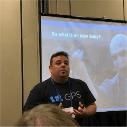 |
Vincent Mirabelli
With over 10 years of experience in both the private and public sectors, Vincent Mirabelli possesses an impressive track record of improving, informing, and transforming business strategy and operations through process improvement, design and re-engineering, and the application of quality to business analysis, project management, and process improvement standards. |
 |
Oz Nazili
Oz Nazili is a product leader with a decade of experience in both building products and product teams. Having spent time at funded startups and large enterprises, he thinks often about the most effective way to deliver value to users. His core areas of interest include Lean MVP development and data-driven product growth. |
Research Contributors and Experts
 |
Mark Pearson
Mark Pearson is an executive business leader grounded in the process, data, technology, and operations of software-driven business. He knows the enterprise software landscape and is skilled in product, technology, and operations design and delivery within information technology organizations, outsourcing firms, and software product companies. |
 |
Brenda Peshak
Brenda Peshak is skilled in business process, analytical skills, Microsoft Office Suite, communication, and customer relationship management (CRM). She is a strong product management professional with a Master’s focused in Business Leadership (MBL) from William Penn University. |
Research Contributors and Experts
 |
Mike Starkey
Mike Starkey is a Director of Engineering at W.W. Grainger, currently focusing on operating model development, digital architecture, and building enterprise software. Prior to joining W.W. Grainger, Mike held a variety of technology consulting roles throughout the system delivery lifecycle spanning multiple industries such as healthcare, retail, manufacturing, and utilities with Fortune 500 companies. |
 |
Anant Tailor
Anant Tailor is a cofounder at Dream Payments where he currently serves as the COO and Head of Product, having responsibility for Product Strategy & Development, Client Delivery, Compliance, and Operations. He has 20+ years of experience building and operating organizations that deliver software products and solutions for consumers and businesses of varying sizes. Prior to founding Dream Payments, Anant was the COO and Director of Client Services at DonRiver Inc, a technology strategy and software consultancy that he helped to build and scale into a global company with 100+ employees operating in seven countries. Anant is a Professional Engineer with a Bachelor’s degree in Electrical Engineering from McMaster University and a certificate in Product Strategy & Management from the Kellogg School of Management at Northwestern University. |
Research Contributors and Experts
 |
Angela Weller
Angela Weller is an experienced Agile business analyst who collaborates with key stakeholders to attain their goals and contributes to the achievement of the company’s strategic objectives to ensure a competitive advantage. She excels when mediating or facilitating teams. |
Buying Options
Make the Case for Product Delivery
Client rating
Cost Savings
Days Saved
IT Risk Management · IT Leadership & Strategy implementation · Operational Management · Service Delivery · Organizational Management · Process Improvements · ITIL, CORM, Agile · Cost Control · Business Process Analysis · Technology Development · Project Implementation · International Coordination · In & Outsourcing · Customer Care · Multilingual: Dutch, English, French, German, Japanese · Entrepreneur
Tymans Group is a brand by Gert Taeymans BV
Gert Taeymans bv
Europe: Koning Albertstraat 136, 2070 Burcht, Belgium — VAT No: BE0685.974.694 — phone: +32 (0) 468.142.754
USA: 4023 KENNETT PIKE, SUITE 751, GREENVILLE, DE 19807 — Phone: 1-917-473-8669
Copyright 2017-2022 Gert Taeymans BV
